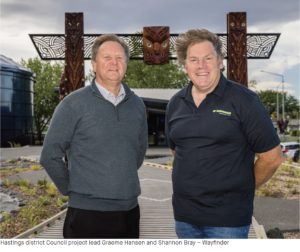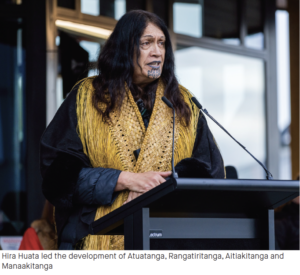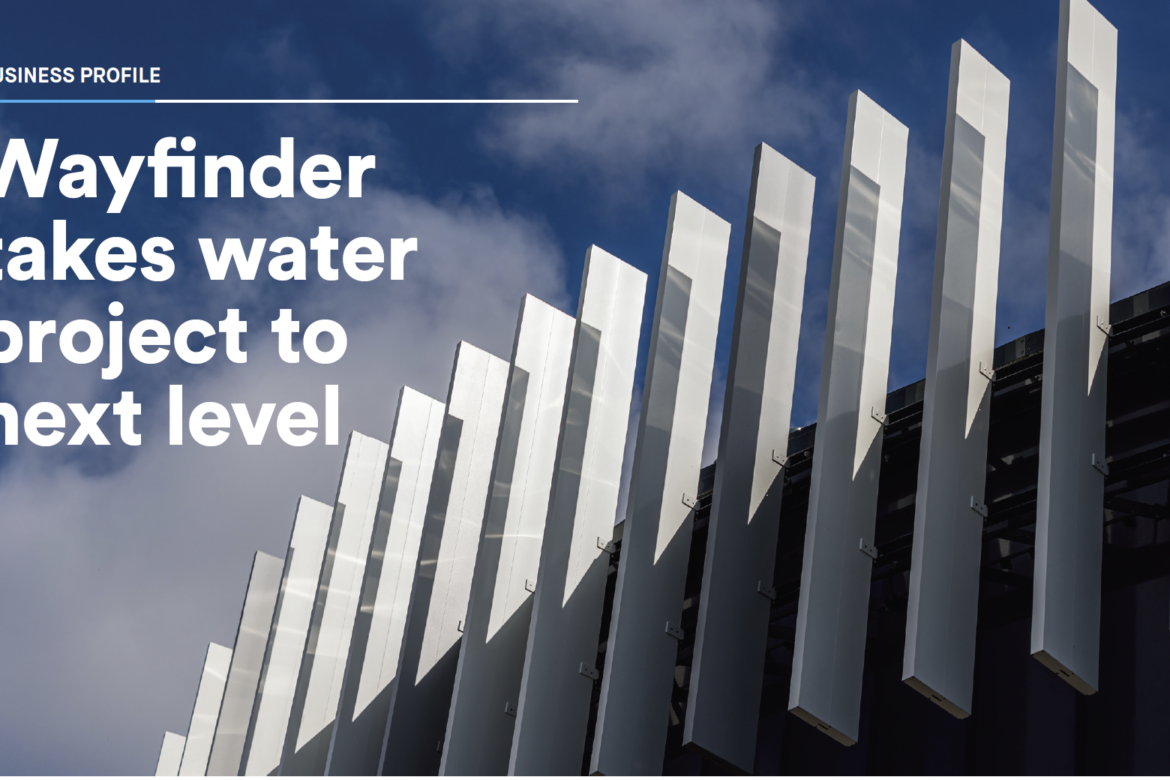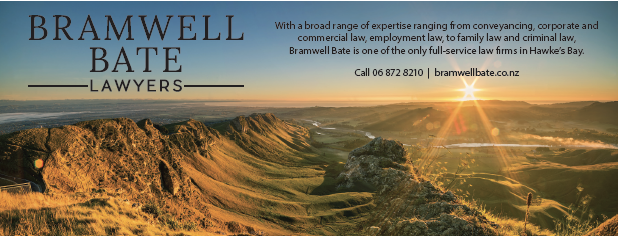Two large water tanks in Hastings city had the potential to be a big eyesore, so when Graeme Hansen from Hastings District Council invited local landscape architect Shannon Bray to a meeting about how to dress it up a bit, no-one would have ever thought of what has become a world first.

“Graeme rang one morning and asked whether I could come and talk with him about a new water tank the Council needed to install in town. “He was concerned about the size and wondered what my thoughts were on how we might be able to mitigate it. We talked about ways to integrate the tanks into buildings, or to plant trees around the perimeter of the
site. But we were both keen to explore less conventional methods to visual screening.
The discussion turned to why the tanks and treatment plant where needed (an infrastructure solution to the Havelock North crisis in 2016), and how maybe there was an opportunity to use them as a positive response to that event.
The idea sparked to tell the story of water.
“Graeme tasked us (Wayfinder) to put together a storyboard to showcase what we’d discussed. Over the following week we developed a vision document that outlined the concept, giving it the working title of ‘Water Central’ until we were gifted the name, Waiaroha, by Ngāti Kahungunu.
Te mauri o te wai, the life essence of water
So easily taken for granted by the simple turn of a tap, but becoming one of our most complex problems
Imagine a place where we could all come together to learn and respect water
Where spirituality and the meaning of water could be explored
Where the value of water is explained
Where the journey of water can be better understood And where everyone can engage
We call it [Water Central] – an educational and immersive facility that focuses on water in its entirety and is integrated with Hastings Water Infrastructure.
Shannon says that the Wayfinder approach is that ideas are born through exploring the values of a project or place. The original discussion for Waiaroha was about questioning what the tank and the treatment plant were for, why they were needed, why did they need to be where they were.

“We do this with all our projects, we aim to dig to the bottom of the rationale to find out the core values and explicit requirements. From that we can then start to develop the most appropriate design outcomes. The initial request was to find a way to mitigate the presence of water tanks but this then turned to the opposite of hiding them to using the water crisis in 2016 and turn it into a positive.
The infrastructure was a direct and deliberate response to a nationally significant crisis. We needed to be clear about that response. When you put it this way, delivering what we delivered is obvious – it couldn’t have been anything else.
When the idea was pitched to the Council water team, their immediate reaction was of nervous energy. They wanted curtains so they could close the view down when they were doing maintenance. But when we explained the vision, they understood and realised that they too needed to be visible, accountable, and actually proud of the work they do. It was remarkable how quickly they came on board. Shannon took on the role holding the project vision and being the ‘facilitator of clever people’.
He did most of the vision writing and storytelling in terms of the original concepts, and assisted Graeme in telling the story to Council.
The Wayfinder team, including Lizzie Burn and Megan McBain, led the master planning for the process and also engaged with mana whenua to come up with the design story, collaborating with the architects, DGSE to develop the building location, footprint and narrative. They also worked closely with the tank and treatment plant engineers to help get them across the vision and respond their designs accordingly.
Finally we worked with the remainder of the engineering team, with Stitchbird (who developed the educational elements), and with the project manager to see it all come together. As for the final outcome …
“We couldn’t be happier. Projects like this come around very infrequently. To have such a strong vision and a client willing to see that vision so clearly delivered is rare.
“When you have been involved in a project for so long (this occupied a space in my brain for over four years) it’s so rewarding to hand it over to the community and see them love it, use it how it was intended, and talk proudly of it as if it were their own.”



